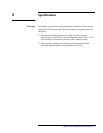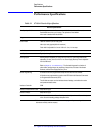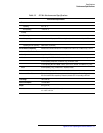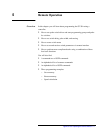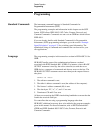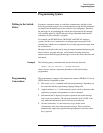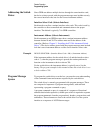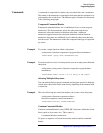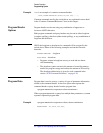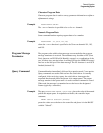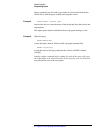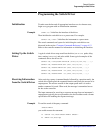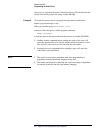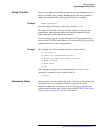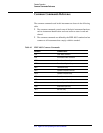
Agilent 87130A Operating and Service Manual 4-5
Remote Operation
Programming Syntax
Commands A command is composed of a header, any associated data, and a terminator.
The header is the mnemonic or mnemonics that represent the operation to be
performed by the switch driver. The different types of headers are discussed
in the following paragraphs.
Compound Command Header
Compound command headers are a combination of two or more program
mnemonics. The first mnemonic selects the subsystem, and the last
mnemonic selects the function within that subsystem. Additional
mnemonics appear between the subsystem mnemonic and the function
mnemonic when there are additional levels within the subsystem that must
be transversed. The mnemonics within the compound message are separated
by colons.
Example To execute a single function within a subsystem:
:<subsystem>:<function><separator><program data><terminator>
ROUTE:GROUP <group name>:AUTOSELECT:OFF;
Example To transverse down a level of a subsystem to execute a subsystem within that
subsystem:
:<subsystem>:<subsystem>:<function><separator><program data>
<terminator>
ROUTE:GROUP:LABEL “Atten 0 to 110 dB by 10 dB steps”;
Selecting Multiple Subsystems
You can send multiple program commands and program queries for different
switch driver subsystems on the same line by separating each command with
a semicolon.
Example The colon following the semicolon enables you to enter a new subsystem.
:<subsystem>:<function><separator><data>;
<function><separator><data><terminator>
ROUTE:DRIVE:OFF:ALL;:SYSTEM:VERSION?
Common Command Header
Common command headers control IEEE 488.2 functions within the switch
driver (such as clear status, etc.). Their syntax is:
*<command header><terminator>
No space or separator is allowed between the asterisk and the command
header.



